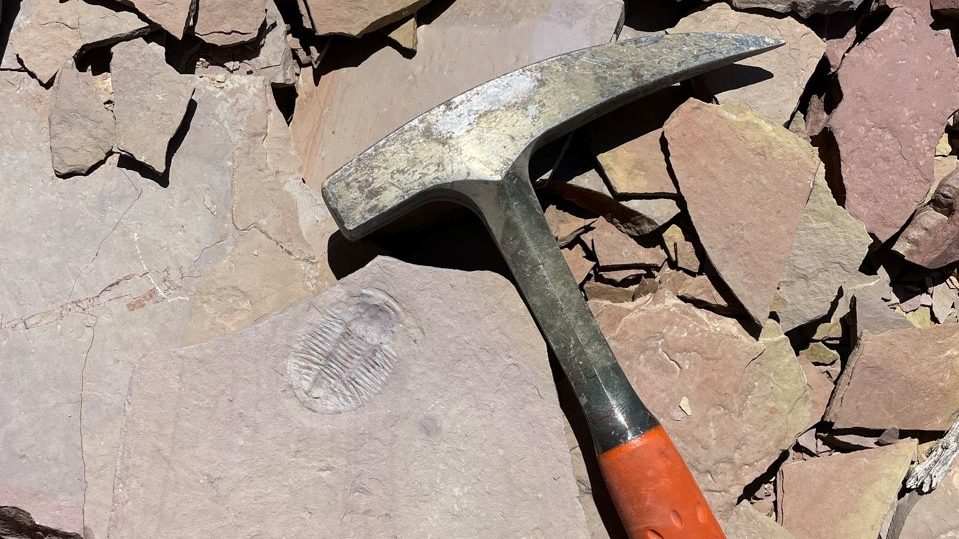ST. GEORGE — What is rockhounding and how would a novice rockhound get started?

Before rock hunters begin traversing Southern Utah’s thick forests and red rock deserts in search of fossils, rocks and minerals, they should do their research.
Mackenzie Cope, a geologist and web manager with the Utah Geological Survey, suggests collectors take proper safety precautions, research the area they plan to collect from and learn about collecting regulations with which they will need to comply.
“Don’t go unprepared,” she said. “That is extremely irresponsible.”
Cope suggests rockhounds gas up their vehicles and take sunscreen, extra food, a first-aid kit, a hard hat if they plan to work under cliffs and plenty of water.
Rockhounds also should avoid working below other collectors as they can cause rocks to fall, she added.
Collectors should prepare for a day in the field by wearing proper attire, as well as safety gear, like protective glasses or goggles and gloves when breaking rocks, Samuel Marolt, a geologist from the Bureau of Land Management’s Richfield Field Office, said.

Recommended tools for rockhounding include hammers, shovels, picks, chisels and buckets, he added.
Many “interesting rockhounding sites” are located in remote areas, so individuals heading out on their own should inform others of their whereabouts and expected return time, Marolt said.
Additionally, rock hunters should avoid abandoned mines, which “can be deadly without the correct safety equipment and special training,” Marolt said. “Even small, abandoned mines that appear safe can be filled with deadly, odorless and colorless gas. Stay out, stay alive.”
Rockhounding rules and etiquette
Rockhounding etiquette dictates that individuals only collect what they will personally use, said Cope, adding that they should respect the land, its history and future visitors, so others can also appreciate what’s there.
“You don’t need buckets and buckets of trilobites,” she said. “There’s no point in that.”

Collectors should leave rockhounding sites the way they found them, Cope said. For instance, if a person knocks out a rock or digs one out of the ground with a shovel, those holes should be filled in.
“You don’t want to come up to a rockhounding site and there’s just holes dug everywhere, and the whole place is decimated,” she said.
A rockhound’s environmental impact “should be negligible if done correctly,” said Marolt, adding that individuals should pack out what they packed in and remember to follow Leave No Trace Principles.
If a person is seen impacting the environment to a greater extent than a “negligible disturbance,” witnesses should report it, Marolt said.
“Rockhounding is a favorite pastime of many, but the few who do not follow the regulations can tarnish the reputation of rockhounding for everyone,” he said. “Many times, those individuals just haven’t been informed of the regulations. Education will solve the problem.”
When researching the area, rockhounds should check with its managing agency, as each one has its own set of regulations and requirements, Cope said.

Visitors should avoid activities that damage vegetation, scenery or archaeological sites or that create hazardous conditions, like pits or trenches, Marolt said. And on BLM land, visitors should use hand tools, as power tools are disallowed.
Archaeological resources are protected under the Archeological Resources Protection Act of 1979 and the Antiquities Act of 1906, Marolt said. Unauthorized excavation, removal, damage or alteration of archaeological or historical objects or sites is prohibited and can result in penalties ranging from a collateral fine to imprisonment.
“Petroglyphs, human graves, old dwellings, pottery, stone tools, arrowheads and other remains of Native Americans and early inhabitants are protected by law because these may provide important links to our past,” he said.
On BLM lands, rocks, minerals and nonvertebrate fossils can be collected without filing with a BLM field office if collecting them doesn’t create a “significant disturbance” of public lands or resources and if the items are not protected archeological or other resources, Marolt said.
Rockhounds can collect up to 25 pounds, plus one piece of petrified wood per day, with a maximum of 250 pounds per person per year, on BLM land, Marolt said. Visitors also can gather “reasonable quantities of common invertebrate fossils,” like mollusks or trilobites, for personal use.
If a rockhound suspects they have found a vertebrate fossil, they should contact their local BLM field office, Marolt said, adding that they should take a picture of the specimen and should not pick it up.

If an individual is unsure a specimen can be legally collected, they should ask their local BLM field office before doing so, Marolt said.
Not all BLM land is open to “casual collection,” Marolt said. For instance, national monuments managed by the agency and some areas with congressional management designations are not open to the collection of fossils. Limitations in such areas can be found in their BLM resource management plans.
Additionally, any specimens found on BLM land cannot be bartered or sold without a contract through the area’s BLM field office, Marolt said.
Areas with active mining claims are not open to rockhounds without permission, and developed recreation sites are only open to collecting if they are designated as such by the BLM, Marolt said.
Finding a site
Those interested in finding a rockhounding site or learning which specimens they’re allowed to collect can contact their local BLM office, Marolt said. Rockhounds should research the area they plan to visit and seek information concerning the types of rocks or minerals that can be sought, what geological formations specimens can be found in and whether they can be collected legally.

Another way to search for collecting sites is to use the Utah Geological Survey’s Rockhounder web application, which Cope said was developed to address a need for a “digital way to rockhound.”
Using a 1995 publication listing hundreds of sites, the agency began to add each point to an interactive map, Cope said. For each site, a team was sent to the field to collect photos, confirm that the rock, mineral or fossil resources were still present and take notes about the location.
Each site was added to the map over a couple of years, Cope said, adding that there are now 114 sites listed.
The team added the land management agencies as a layer on the map, so users can see which one is stewarding a particular area. The application includes site coordinates, geological information and a feedback form for users to submit comments. Additionally, the app features a search tool that can be used to find information about a specific specimen type, Cope said.
The application is available on desktop, tablet or mobile device browsers, Cope said, adding that it cannot be accessed offline.
To view the Utah Geological Survey’s Rockhounder web application, click here. By clicking on the button titled “collecting rules” in the top-right corner, users will find various resources and articles related to rockhounding.
For more information about what can be collected on BLM lands, view their webpage on the subject here.
Photo Gallery
An Alaskite rockhounding site as shown on the Utah Geological Survey's Rockhounder web application | Image courtesy of the Utah Geological Survey. St. George News Marine fossils located near Cedar City, Utah, June 11, 2019 | Photo by Alysha Lundgren, St. George News A marine fossil located near Cedar City, Utah, June 23, 2019 | Photo by Alysha Lundgren, St. George News Marine fossils located near Cedar City, Utah, June 23, 2019 | Photo by Alysha Lundgren, St. George News A gastropod (snail) fossil collected from the Crystal Peak area, Millard County, Utah, date not specified | Phot courtesy of the Utah Geological Survey, St. George News Snowflake obsidian collected from the Black Rock Desert, Millard County, Utah, date not specified | Photo courtesy of the Utah Geological Survey. St. George News Wonderstone rock can be collected in Vernon Hills, Tooele County, Utah, date not specified | Photo courtesy of the Utah Geological Survey. St. George News The homepage of Utah Geological Survey's Rockhounder web application | Image courtesy of the Utah Geological Survey. St. George News The Utah Geological Survery's Rockhounder web application is optimized for tablet and mobile use | Image courtesy of the Utah Geological Survey. St. George News Deep red agate collected from the Moab area, Grand County, Utah, date not specified | Photo courtesy of the Utah Geological Survey. St. George News An andesite landscape rock available for collection at the community pit managed by the Bureau of Land Management in Losee Canyon, Garfield County, Utah, date not specified | Photo courtesy of the Utah Geological Survey. St. George News An andesite landscape rock community pit, managed by the Bureau of Land Management, Losee Canyon, Garfield County, Utah, date not specified | Photo courtesy of the Utah Geological Survey. St. George News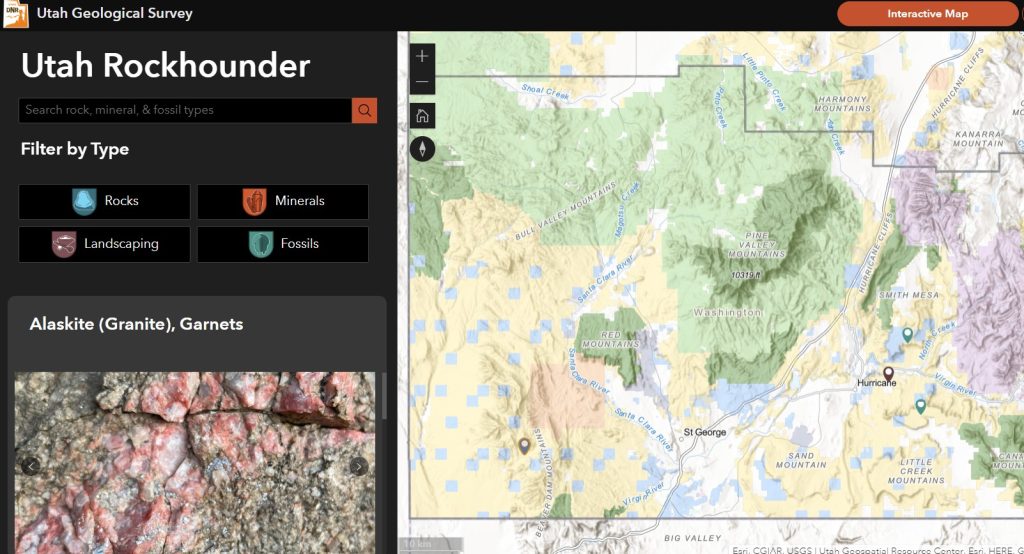


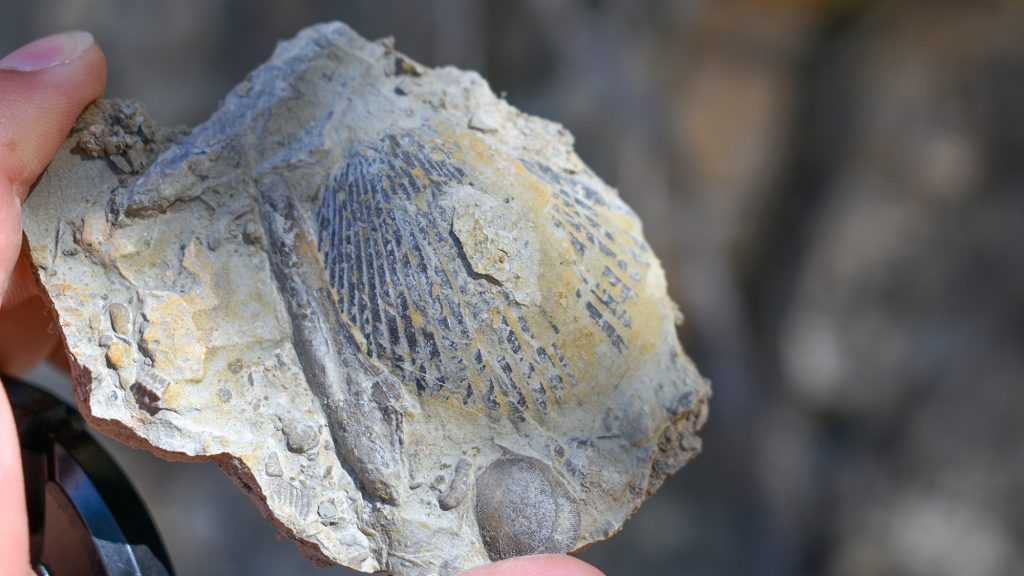
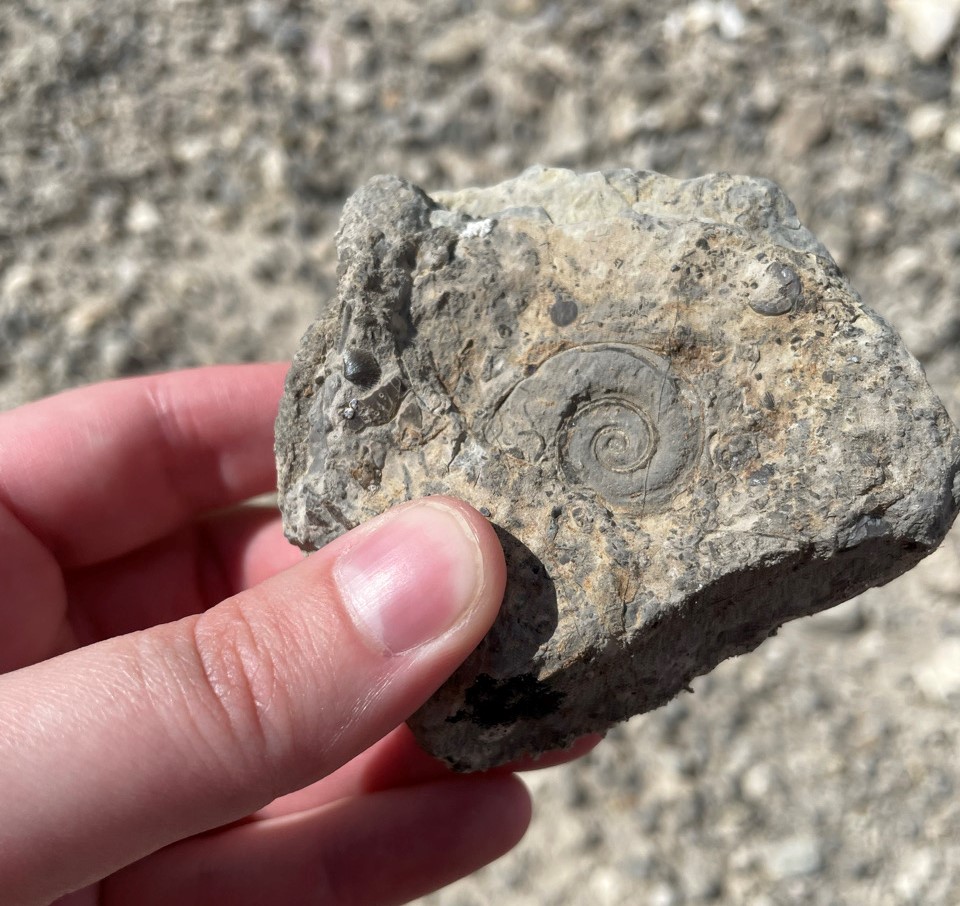
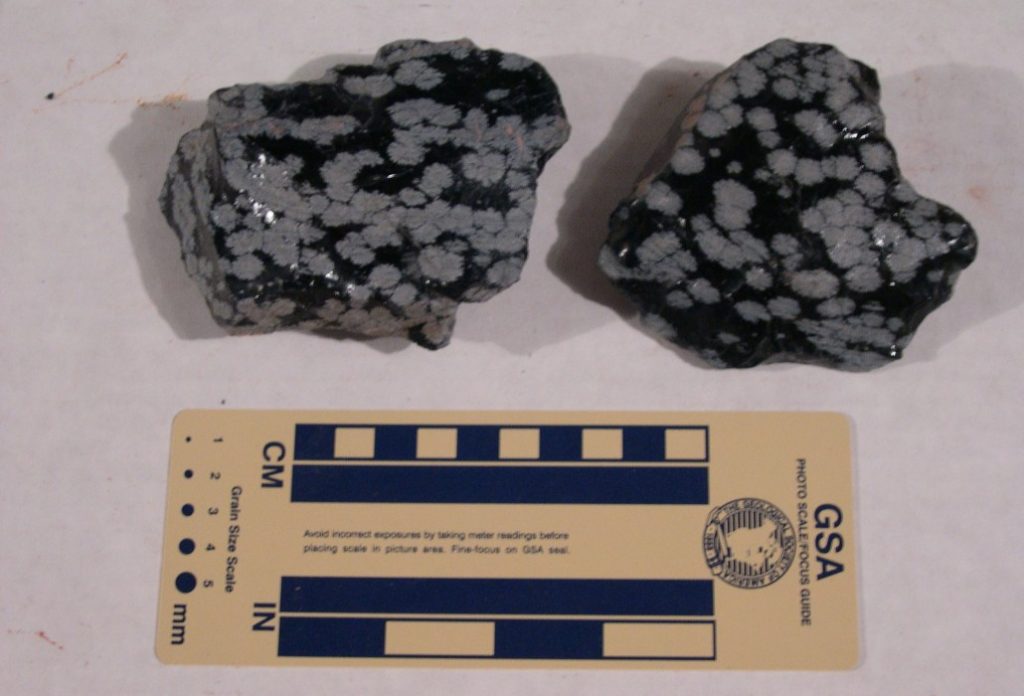
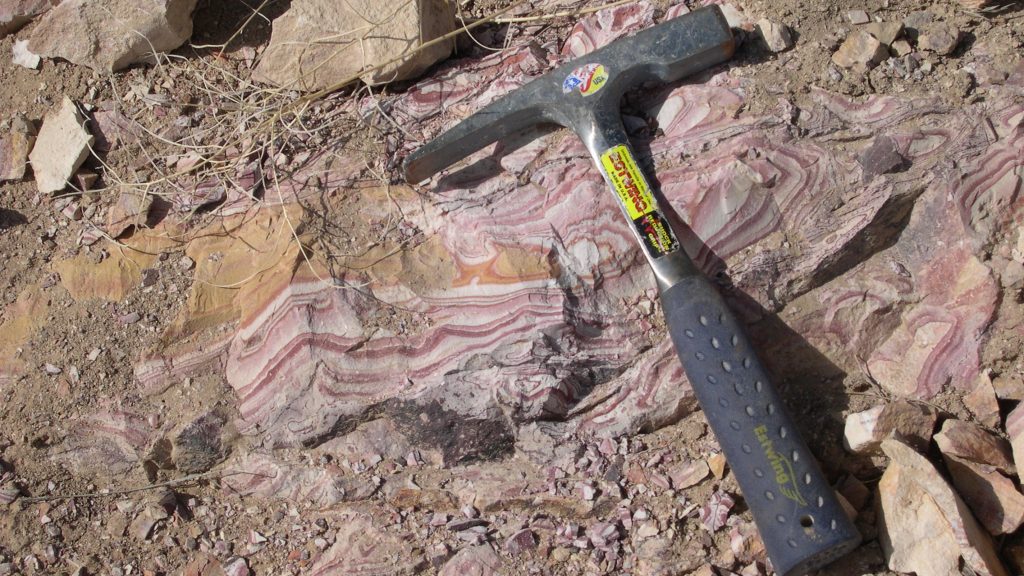
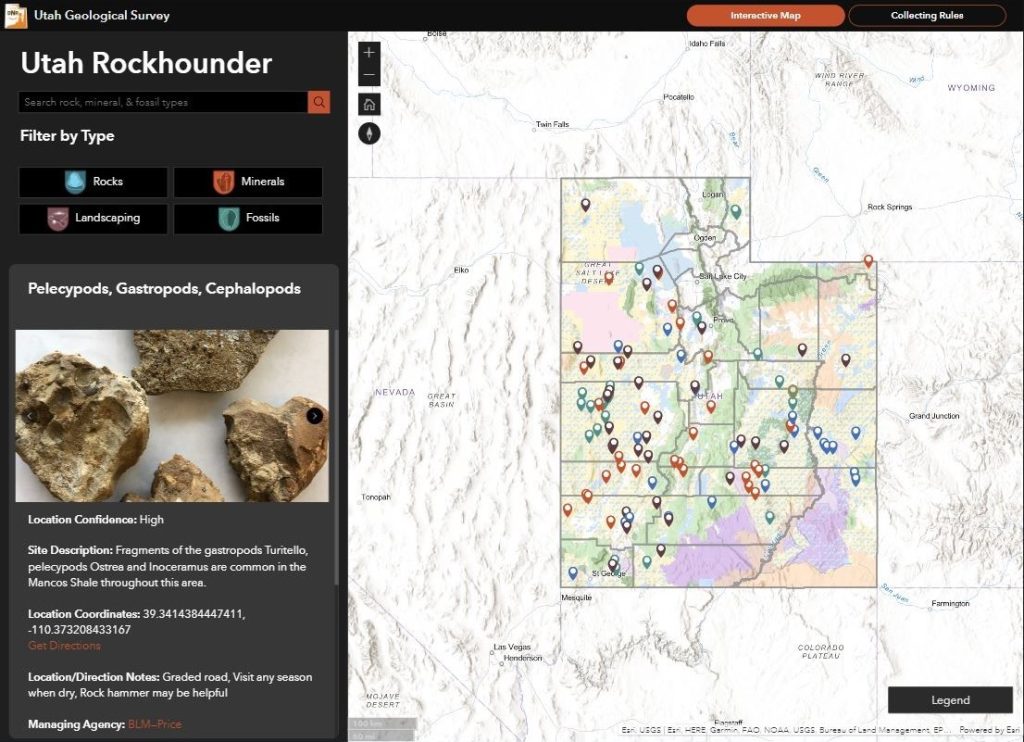


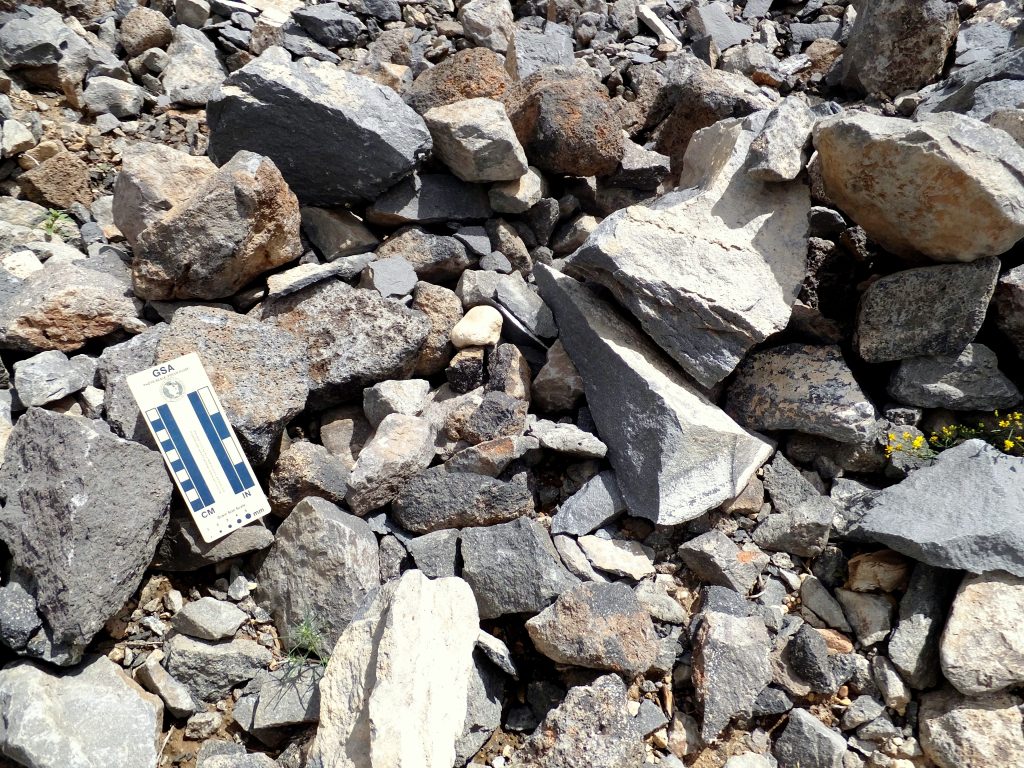
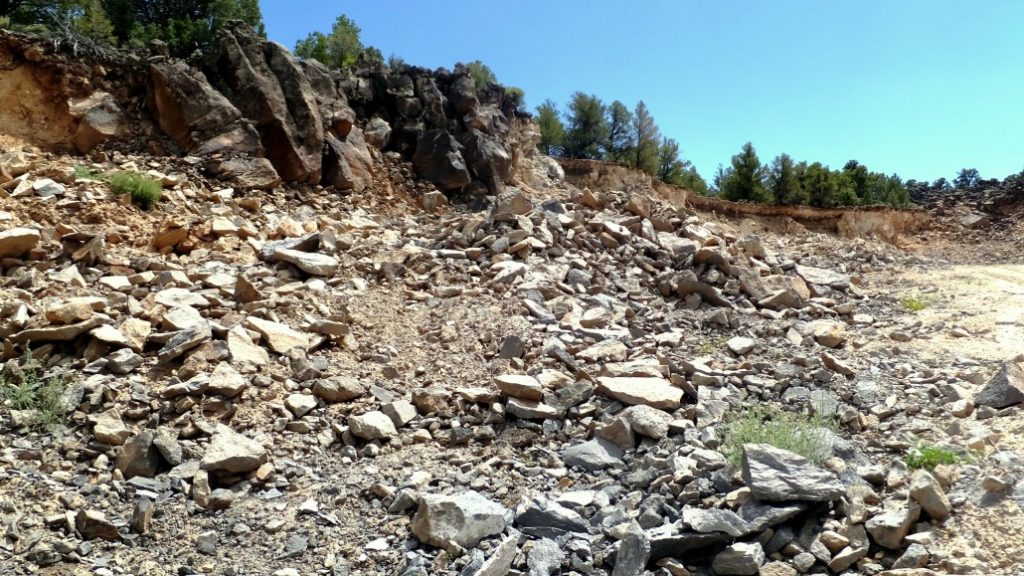
Copyright St. George News, SaintGeorgeUtah.com LLC, 2022, all rights reserved.

